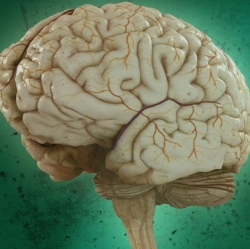
There’s no escaping the fact that the Human Brain Project, with its billion-dollar plan to recreate the human mind inside a supercomputer, sounds like a science fiction nightmare.
But those involved hope their ambitious goal of simulating the tangle of neurons and synapses that power our thought processes could offer solutions to tackling conditions such as depression, Parkinson’s disease and Alzheimer’s.
The Human Brain venture is the next step in a long-running program that has already succeeded in using computers to create a virtual replica of part of a rat’s neocortex — a section of the brain believed to control higher functions such as conscious thought, movement and reasoning.
Scientists at its forerunner, the Switzerland-based Blue Brain Project, have been working since 2005 to feed a computer with vast quantities of data and algorithms produced from studying tiny slivers of rodent gray matter.
Last month they announced a significant advancement when they were able to use their simulator to accurately predict the location of synapses in the neocortex, effectively mapping out the complex electrical brain circuitry through which thoughts travel.
Henry Markram, the South African-born neuroscientist who heads the project, said the breakthrough would have taken "decades, if not centuries" to chart using a real neocortex. He said it was proof their concept, dubbed "brain in a box" by Nature magazine, would work.
Now the team are joining forces with other scientists to create the Human Brain Project. As its name suggests, they aim to scale up their model to recreate an entire human brain.
It is a step that will need both a huge increase in funding and access to computers so advanced that they have yet to be built.
If their current bid for €1 billion ($1.3 billion) of European Commission funding over the next 10 years is successful, Markram predicts that his computer neuroscientists are a decade away from producing a synthetic mind that could, in theory, talk and interact in the same way humans do.
